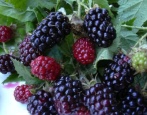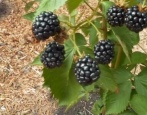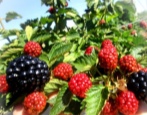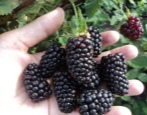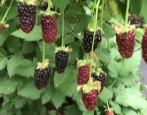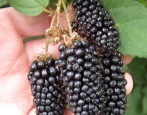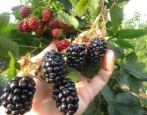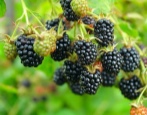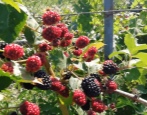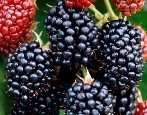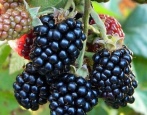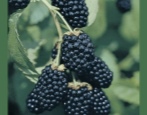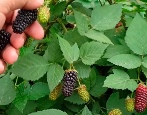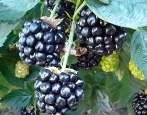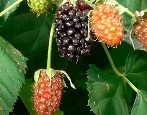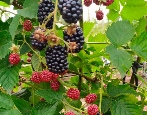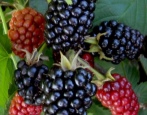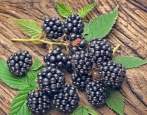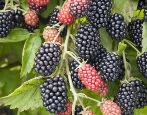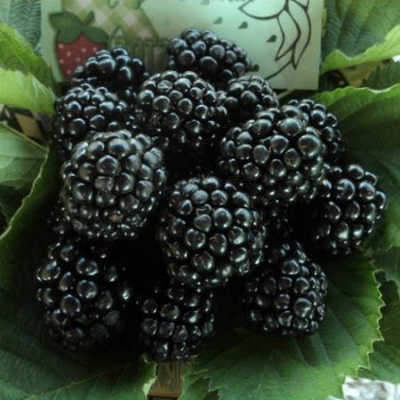
- Authors: America, John R. Clark
- Taste: sweet, delicate delicate fruity, without bitterness and acid
- Scent : there is
- The presence of thorns: No
- Berry weight, g: 7-8
- Fruiting period: the beginning of June
- Frost resistance, ° C / Winter hardiness: winter hardy
- Keeping quality: Yes
- Watering: moderate, does not tolerate waterlogging
- Synonyms (or Latin name): Osage
The Osage Blackberry is one of the attractive American varieties. Its advantage is its wide range of possibilities for eating. Therefore, it is worth familiarizing yourself with this plant in more detail.
Breeding history of the variety
The American blackberry has the original brand name Osage. The Russian name is its transcription. The main breeding work on the creation of the variety was carried out by John R. Clark, together with other employees of the University of Arkansas. The project, which began in 2000, was intended to bring taste to a whole new level. Blackberry was created by cross-pollination of seedlings; hybrid registration was completed in 2012.
Description of the variety
Ripening terms
The Osage blackberry begins to fruit in early June. Therefore, this variety is advised to grow together with the famous Ouachita. Then the plantings will complement each other, maximizing the harvest time. Fruiting at Osage lasts 40 days. Therefore, you can also feast on berries in early August.
Yield
For 1 blackberry bush, there can be up to 5 kg of fruits. This is a pretty decent level, even in the culture as a whole. Compared to other early types, the Osage wins even more. They begin to remove the berries as soon as the surface darkens.
Berries and their taste
Taste descriptions often refer to a fruity sensation with subtle sweet notes. The pulp has a firm consistency. The fruits themselves are round, their weight is 7-8 g. The aroma is present, but not too pronounced. Osage blackberries are good both fresh and frozen and canned, the harvest can be transported almost without problems.
Growing features
Site selection and soil preparation
The plant needs a neutral soil. Calcareous and alkaline areas are strictly contraindicated. It is necessary to plant Osage blackberries exclusively in late spring, because a well-warmed earth is important for it. Autumn planting is allowed only in the southern regions. In this case, it is important to make sure that the temperature does not drop to zero or lower for at least some time.
Deep holes should be dug about 14 days before planting. 125 g of superphosphate, 50 g of potassium nitrate, a certain amount of organic matter are placed in each recess. Dense soil is improved by adding river sand. If the land has a weak acid reaction, you need to lay weathered peat.
Watering and feeding
The variety is drought resistant. But decent watering without waterlogging is very important during the growing season and when laying fruit. With proper planting, you can start feeding in the second or even in the third year. Ammonium nitrate is laid in the spring. When forming fruits, the addition of phosphorus and potassium fertilizers is required.
Thanks to compost or humus, it is possible to provide:
nutrition of the bushes;
moisture retention;
optimal looseness of the soil (it will not cake).
Frost resistance and preparation for winter
The resistance to low temperatures has not yet been studied enough, since the operating experience in domestic conditions is not great. However, there is evidence that the culture tolerates cold no more than -13 degrees. Therefore, its planting, even in the Black Sea zone, must be covered.
Diseases and pests
Resistance to damage by pathogens and harmful insects in the Osage blackberry is quite high.However, some precautions will definitely not be superfluous. Bushes can only be planted at a certain distance from the raspberries. Prevention also means:
weed removal;
peeling of the earth;
drainage;
protective treatments.
Blackberries can be attacked by aphids, various mites. From plant diseases, the danger is:
anthracnose;
mosaic;
purple spot;
septoria;
gray rot;
curliness;
powdery mildew.
Reproduction
Root suckers and green cuttings are often used. The Osage Blackberry also allows you to resort to dividing the bush. Basically, it is divided when a plant needs to be transplanted somewhere. It is very important that such seedlings have a powerful root system. All old branches that will only pull juices in vain must be completely removed. Reproduction by root suckers is carried out at the very end of spring.
